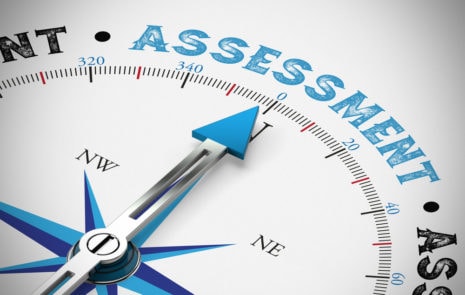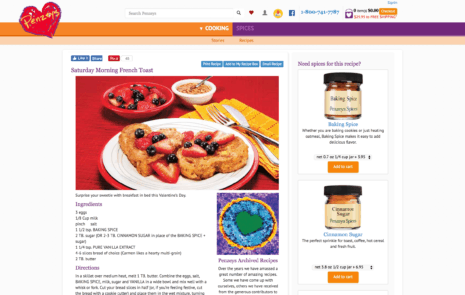
One message, many jobs to do
6 Questions & Answers about your Marketing Message
While discussing a business marketing message in my workshop, marketers raised questions on how to make a clear, compelling, concise business message — a breakthrough message.
Specifically, marketers asked:
How to explain a complex business in 7 seconds to gain attention?”
“What are some tips for writing headlines that grab the audience?”
“What is the best formula for writing a good subject line?”
“How does a prospective customer react to serious vs. ‘catchy’ subject lines or content introductions?”
“What types of words are most successful in an attention-grabbing headline?”
“How do I figure out what the right 7 seconds or 23 words are to start?”
Great business messages catch a buyer’s attention in the first 7 seconds.
That’s crucial because people’s initial attention span is only 8.25 seconds.

If you can’t tell your story well in the first 7 seconds, you may never get another opportunity. Think of the first 7 seconds of your message as a potential:
- Headline
- Email subject line
- Tweet
- Elevator speech.
Maximize the power of your marketing messages.
Create a 1-PageTM Message Map for your business.
A Message Map helps you solve the problems of where to begin your business message and how to keep it succinct and punchy.
Your home base message points you to ideas for headlines, email subject lines, Tweets, and elevator speeches that break through.
In a world where people are bombarded by 1,500 to 30,000 messages a day, everyone’s an expert at tuning out unwanted messages. People skip TV commercials, tune out billboards and radio ads, avoid junk mail and ignore banner ads.
As Howard Tullman, CEO of 1871, says, “Don’t raise your voice. Improve your arguments.”
How can marketers break through inattention?
First, make the home base of your Message Map as powerful as possible.
Your home base is the single most important message, the heart of your Message Map.
On your Message Map, back up your home base with 3 or 4 positive points that make your home base even more credible and believable. Create a home base and positive points of 23 words or fewer, so you can tell your story in 7 seconds or less.
Here’s the basic anatomy of a Message Map:

A 1-Page Message Map makes many marketing, content, and communications tasks quicker. To succeed, your home base message must be:
- Compelling, offering a benefit that instantly answers your audience’s first question: What’s in it for me? WIIFM?
- Concise, so you can tell your story in 23 words or 7 seconds.
- Crystal-clear: Use words and ideas your audience already understands. Avoid the curse of knowledge: don’t assume audiences know what you know. Eliminate jargon and acronyms.
- Consistent, a message used by everyone across your organization, so the whole choir sings from the same songbook. Consistent messages are easily remembered since they earn a spot in the place cells of your buyer’s brain.
- Credible, backed up by facts, stories, and research that withstand careful scrutiny and competitors’ challenges.

Here are ideas from Message Map co-creator Tripp Frohlichstein on how to create a great home base.
Make it explain why you exist, make it emotional, and keep it simple and honest.
With a Message Map, everyone who delivers your marketing message gains confidence.
As The Rubin Family of Wines CEO Ron Rubin observes, having input and agreeing on the message of the company makes employees …
feel like owners themselves in this message of the company that they’re devoting a great amount of their life to. They have a say in what we’re all about. The esprit de corps went up.
“The Message Map makes it so much easier for them. They’ve all told me that. It gives them so much more confidence and ability and consistency.”

Here’s an example of a well-constructed home base and positive points for the Virgin Chicago Hotel.
Here are handy pointers on how to create your home base and Message Map:
- Gather 6 to 12 top decision-makers face-to-face with an objective facilitator to co-create your message. That approach ensures everyone’s buy-in and speeds up future reviews.
- Use real buyers’ questions and insights from buyer persona research as inputs to your message. Focus on what your buyers want to know, their pain points and worries, and what they aspire to achieve.
- Simplify your language by imagining that you’re explaining your business to someone who knows nothing about it: your neighbor, your mother, or your kids. This approach can simplify the most complex topics and companies. How would you explain it to Mom?
- Delete jargon and acronyms, unless you are absolutely certain that everyone in your audience understands them. Test acronyms for conflicting meanings at Acronym Finder. The more meanings you find for any acronym, the more confused your audience will be.
More pointers on how to create your message map
- Write short sentences in the active voice with nouns and verbs. Use adjectives and adverbs sparingly. Employ power words like you, new, free, and hundreds more on these lists from SumoMe and CoSchedule.
- Include numbers in your message.
- Minimize the brainpower (cognitive load) required to read your message. To keep it readable, write at a grade level that most people understand. Ernest Hemingway wrote at a 4th-grade level, Seth Godin writes at a 7th-grade level, and The Economist writes at a 10th to 11th-grade level.
Many of the best writers keep it simple to maximize the readability of their message. - Read your message out loud. Make it sound better with wordplay. Alliteration, rhyme, and puns add pith, punch, and persuasiveness. They surprise and delight readers, says Ann Wylie.
- Test the emotional marketing value of your headlines with this free tool. It’s humbling, how hard it can be to write a headline that scores high while hitting the right notes – intellectual, empathetic, and spiritual.
From one Message Map, headlines, email subject lines, Tweets, elevator speeches and more will naturally cascade. Whenever you get stuck on your message, always refer to your Message Map.

To sum it up, when it comes to messaging, take Albert Einstein’s advice:
“Everything should be made as simple as possible, but no simpler.”
Make your message as simple as possible with 52 Ideas for Simple Content from Einstein, da Vinci & Shakespeare here.
Learn more about 1-Page Message Maps here.
Related Posts
Can You Win Customers’ Attention in 7 Seconds?
In the first 7 seconds, your customer makes the first critical decision. Whether to keep listening, enter into a conversation with you, or end it...
Extend Your Content Marketing Reach with Social Media
How to extend your content marketing reach with social media. Decide on a clear role for social media. Get employees, executives, and sales involved!...
How do you assess your content marketing effectiveness?
Assess content marketing effectiveness 4 ways A marketer from New York Life Insurance asked this question in our content marketing workshop, “How do you...
Two ways to tell your story: generic or spicy
Too many business stories don’t break through because they’re too boring. Predictable. Plain vanilla. To win attention, spice up your story Why are many...







